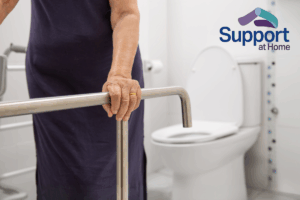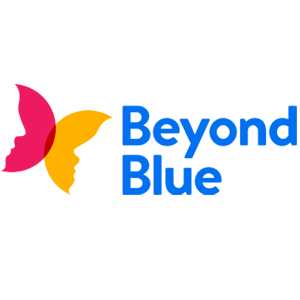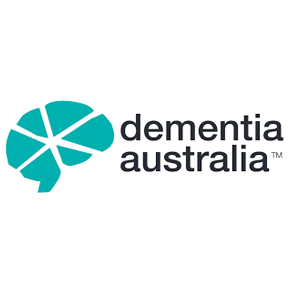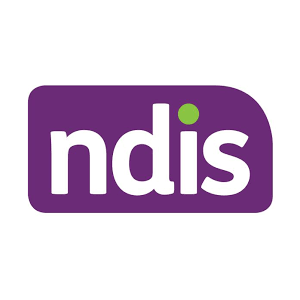Yoga is for everybody. That means for every type of body as well as at any age! At its core, it is the art and science of healthy living that brings the mind and body into alignment. The word ‘Yoga’ means ‘to unite’ or ‘to join’. It is a physical practice that can simply improve basic flexibility and physical well-being and can awaken one to deep spiritual truths about the very nature of reality and consciousness.
The benefits for developing a yoga practice are numerous and have been proven throughout the ages to benefit anyone who engages in any form of yoga.
A Little Background on Yoga
There are so many types of yoga being taught these days it is difficult to know where to begin, especially if you are incorporating this into your in home care routine. Hatha yoga is the hallmark of all yoga and the best starting place for any beginner. Hatha yoga classes are slower paced, focusing on breathing and physical exercises, all suitable as part of in home health care, making it the best choice for the beginner. Once your experience with Hatha yoga builds, there are other schools of yoga that focus on various methods of practice including, but not limited to, Ashtanga, Iyengar, Vinyasa, Bikram and Restorative yoga.
How Yoga Improves Heart Health
Many cardiologists are now recognising the benefits of yoga on managing heart health. Studies have shown that practicing yoga regularly helps regulate hormones such as cortisol and adrenaline which are released when we are under emotional stress. As we get stressed these hormones narrow arteries and increase blood pressure. By practicing yoga, stress is reduced. For people who have experienced a cardiac event such as a heart attack, surgery, or a diagnosis of heart disease, doctors often encourage doing yoga as part of the overall treatment plan.
Additional yoga benefits include:
- Improves core strength
- Loosens the joints and builds muscle
- Reduces anxiety and depression
- Improves the function of nearly every organ in the body
- Reduces fatigue and improves sleep
- Increases joint lubrication
- Helps relieve arthritic pain
- Provides a supportive and fun social environment
- Increases physical and emotional confidence
- Can be part of in home health care
Yoga poses for Fall Prevention
One of the biggest risks when we are ageing in place is falling. For a multitude of reasons, we move less, and lose our balance more easily. Falls are the leading cause of broken bones and hospitalisations reported in care for the elderly, so taking the proper steps to prevent falls inside the home is essential. Yoga improves balance and can therefore help prevent falling and the need for additional in home care or aged care services.
Here are five yoga postures that you can start practicing today for fall prevention or share with your loved one. If you are providing in home care, do the exercises along with your loved one and make it fun.
Downward dog: This pose elongates the spine. It is achieved by folding the body at the hips and placing the hands and feet on the floor. If you can’t reach the floor, you can place your hands on a chair instead.
Crescent Lunge: This pose is done in standing position, lunging forward on one foot, bending at the knee and holding the arms in the air or at the sides. Crescent lunge is an excellent pose for balance because the base of support is long and narrow.
Chair pose: This pose strengthens the muscles in the thighs and simulates sitting in a chair without actually using one. It involves bending the knees and hips and lowering as though you were going to sit down into a chair. This pose helps to increase strength and stability through strong leg muscles.
Bridge pose: Bridge pose increases the strength of the core muscles as well as those in the hips and legs. It is done on the floor but can also be done on a firm bed or couch. It strengthens and challenges the stability of the muscles in the hips, core, and legs. It involves lying on your back and raising the pelvis to create one long line between the head and the knees.
Tree pose: This pose involves standing on one leg and stabilising the body using leg and core muscles to achieve balance and prevent falls for seniors. There are beginner versions of this and more advanced versions, so it is a good exercise to improve balance over time.
Chair Yoga
Don’t worry, yoga isn’t just for those who can put their foot behind their head! Chair yoga is highly beneficial and can improve strength and balance. The best thing about yoga is that it can be practiced gradually, in home care and aged care settings, and poses can become more challenging as you build strength, lengthen, and strengthen your muscles.
Here is one example of one great stretch that can be done in a chair. There are many sites online that show how to do many chair-based poses clearly and safely.
Seated Forward Bend:
- Inhale while sitting firmly upright in a chair, ideally one without arms. Focus on extending your spine. Fold your torso over your legs. Start with your hands resting on your thighs. You can slide them down your legs as you bend for extra support. As you get more flexible, you can keep them at your sides as your torso gets closer to your thighs.
- While bent toward your thighs, take five breaths. This massages the intestines and helps to passively lengthen the spine and stretch the back muscles.
- When ready, inhale as you slowly lift your torso to a fully seated position with your spine straight, yet relaxed.
Start slowly at home by watching videos, finding yoga teachers online or work with your home care agency to find the right start for you. You can also start by going to a class in your area, and your in home care services could accompany you there. The important thing is to try it because it is good for you and your loved one.
Creating a Yoga Practice
The very best way to create your own yoga practice is to find a local yoga class where the instructor can guide you as you learn the poses.
Here are a few basic guidelines to keep in mind when beginning to practice yoga:
- Yoga is a practice. It is not a competition. Don’t compare yourself to others.
- Always use a Yoga mat. This way you do not slip while practicing the poses.
- Don’t force any movement. Listen to the limits of your body. The point is to do the best you can now and know that overtime your flexibility will improve. If you cannot get into the pose don’t force yourself. Do the ones you can achieve easily.
- Keep it slow and steady. A slow, steady, rhythmic breathing will actually help you to balance in these poses.
- Focus on breathing. Breathing during the various movements is important. It seems obvious, but the truth is many of us hold our breath when engaged in moving. Breathe in slowly through your nose and exhale through your mouth.
References
Join Our Newsletter
Our Latest News
As a leading age care provider, Home Care Assistance offers tailored in-home care services for older Australians, enabling them to live happier and healthier lives in the comfort of their own homes.
We offer private and government subsidised Care Packages and have office locations that are a registered NDIS provider. Our Care Workers undergo extensive training in order to deliver unmatched in-home aged care services where people can continue ageing in place. We are proud ambassadors of the My Aged Care government funded aged care program, enabling Australians to successfully navigate the process and gain approval for in-home care support packages. Home Care Assistance offers hourly care, specialised care, Alzheimer’s and Dementia care, hospital to home care, and 24 hour in home care.













